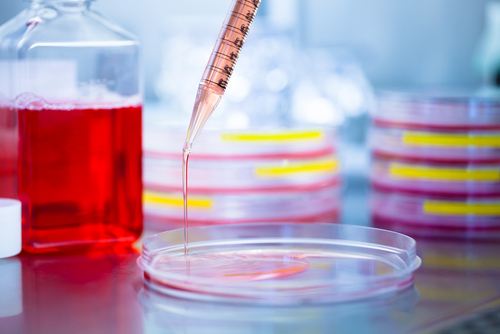Lab-grown Bone Cells May Predict Gaucher Patients’ Response to Bone Disease Therapy
Written by |

Generating specific bone cells derived from Gaucher patients may be used to monitor the progression of bone disease and predict treatment response in Gaucher disease patients, according to researchers.
Their study, “Generation of osteoclasts from type 1 Gaucher patients and correlation with clinical and genetic features of disease,” was published in the journal Gene.
Gaucher disease type 1 (GD1), which accounts for 94% of all Gaucher patients, leads to an enlarged spleen and liver, low platelet levels, anemia (low levels of red blood cells or hemoglobin), and bone disease.
Bone lesions, present in 93% of all Gaucher patients, are one of the most debilitating consequences of Gaucher disease. Early detection and monitoring of bone disease is important to halt disease progression through enzyme replacement therapy (ERT) or substrate reduction therapy (SRT) and to evaluate treatment response, respectively.
Studies have shown that osteoclasts — a type of bone cell that breaks down bone tissue — derived from GD1 patients and grown in the lab break down bone faster than those from healthy people, and that the addition of ERT and SRT was able to reverse this.
Also, the number of osteoclasts generated in the lab from blood cells of GD1 patients was found to be associated with bone disease severity and bone mineral density.
Researchers at Royal Free Hospital and University College in London, England, evaluated the link between osteoclast bone cells from GD1 patients and patients’ bone mineral density, bone pain, and anemia, as well as the potential use of generating osteoclasts to predict treatment response in these patients.
They collected blood samples (to generate bone cells) and clinical data, including symptoms of bone disease and others, of 74 GD1 patients (42 men and 32 women) attending the Royal Free Hospital over 10 years.
The results showed that significantly higher numbers of osteoclasts were generated from patients with bone pain, anemia, or from whom the spleen had been removed, compared to those without these features.
These findings suggest that patients with anemia and without a spleen may be at greater risk of bone disease.
When looking at the effects of ERT/SRT in generating osteoclasts, the researchers found that the addition of these therapies significantly lowered the number of osteoclasts generated from blood samples of GD1 patients and improved bone mineral density.
This was particularly significant for cells derived from patients who had not been previously treated, compared to those who were already receiving treatment, at the time of the first blood collection.
However, the number of generated osteoclasts from five patients was not reduced, and these patients had a history of bone events while receiving therapy, suggesting that this type of assay may be useful “for identifying potential patients whose bone disease does not respond well to Gaucher-specific therapy,” researchers wrote.
Additional experiments showed that switching from ERT to SRT and vice-versa may be a good strategy in patients who are not responding to their current Gaucher therapy.
The number of generated osteoclasts was also found to be associated with distinct types of GD1 mutations, and patients carrying mutations other than the N370S mutation (a milder GD1 mutation) had significantly increased production of osteoclasts, more frequent bone lesions while receiving therapy, and increased disease severity than those who carried it.
“Our finding that in vitro osteoclast generation correlated with several bone related parameters suggests that this assay or a more physiologically representative version may be of value in assessing bone disease and its response to therapy in the Gaucher patient population,” the team concluded.



